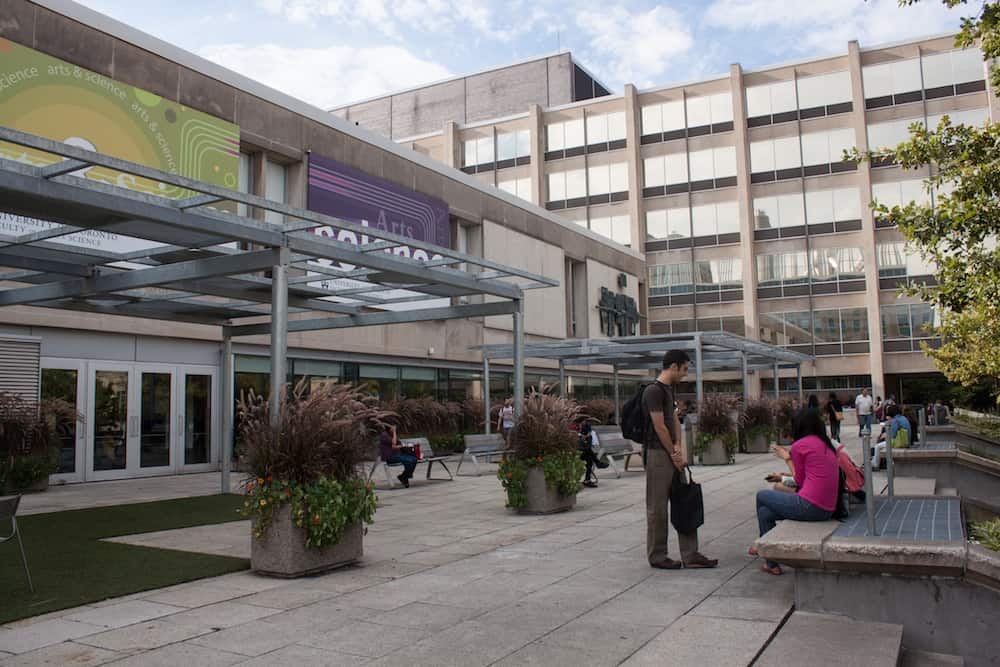The University of Toronto is considered by several institutions and international ranking systems to be one of the best universities, not only in Canada, but worldwide — excelling both in instruction and in research. The Times Higher Education World University Rankings for the 2012-2013 academic year ranked U of T as the 21st-best in the world, placing the school almost 10 spots ahead of the next highest-ranked Canadian university, the University of British Columbia.
The ranking reflects all of U of T’s complex departments: the university’s arts and humanities rank the best at 17th, and physical sciences, the lowest at 27th. The quality of education depends on one’s program of study, class size, and the availability of work-study positions, to name but a few factors.
U of T publishes more papers than any other university in North America except for Harvard. However, it is not always easy for students to make the transition from participating in classes to being directly involved in research projects. Maintaining good contact with one’s professors and taking initiative go a long way towards finding a position.
Maxwell Adams, a fifth–year physics specialist, said: “I actually approached the work-study program office directly, asked if it was possible to set up a research position with a professor, to which they said yes, and then did so. I’ve worked with professors in different departments from my own: last year mechanical engineering, this year aerospace engineering.” Derek Leung, who is a second–year accounting student in Rotman Commerce, said he finds his program to be very theoretical, with a lack of hands-on experience. This is a common complaint within many disciplines; sure, the classes themselves are interesting and have their own academic merits, but they lack a practical component.
Initiatives like U of T’s brand new courses within the Impact Centre offer interesting opportunities for students to learn more about how they can apply the knowledge they learn in class to their working life. They offer two new courses: IMC200 (Innovation and Entrepreneurship) and IMC390 (Internships in New Ventures). The concepts these courses introduce in terms of developing, organizing, and managing businesses are useful to students regardless of their academic backgrounds. When it comes to the Faculty of Arts and Science, there is a consensus that, particularly in first year, classes are too large and therefore impersonal. Classes will often have several hundred students, with many over a thousand.
Kaleem Hawa, a second–year studying international relations and human biology, stated, “For the science courses, we faced massive lecture halls filled with hundreds of people. The size can be oppressive in these circumstances, and the masses of disinterested people can really dampen your interest. Conversely, my experience with the Trinity One Program was extremely positive. The small class size of 25 allowed me to engage more fully, debate with my peers, and learn more about their outlooks on foreign policy and international politics.”
Algimantas Janusis, an english specialist from Victoria College, echoes the same sentiment: “Small classes, hands down, are better. It’s more difficult to hide behind a laptop.” This attitude seems more prevalent within the humanities and social sciences. Theoretical, literary, or political ideas are perhaps best absorbed through discussion, while subjects of an empirical nature may be more suited to big lecture halls. In the Department of Life Sciences, students have responded that elements other than the class size dictate the quality of the course — for example, whether iclickers were used. Sarah Rocha, a biochemistry and pharmacology double major at New College, said, “I don’t think class size really impacts the quality of the course. Courses that are predicted to have large populations are tailored to those numbers, so quality is not lost amongst the sheer size of a lecture hall.”
Sonia Liang is a second–year student studying english and political science.


